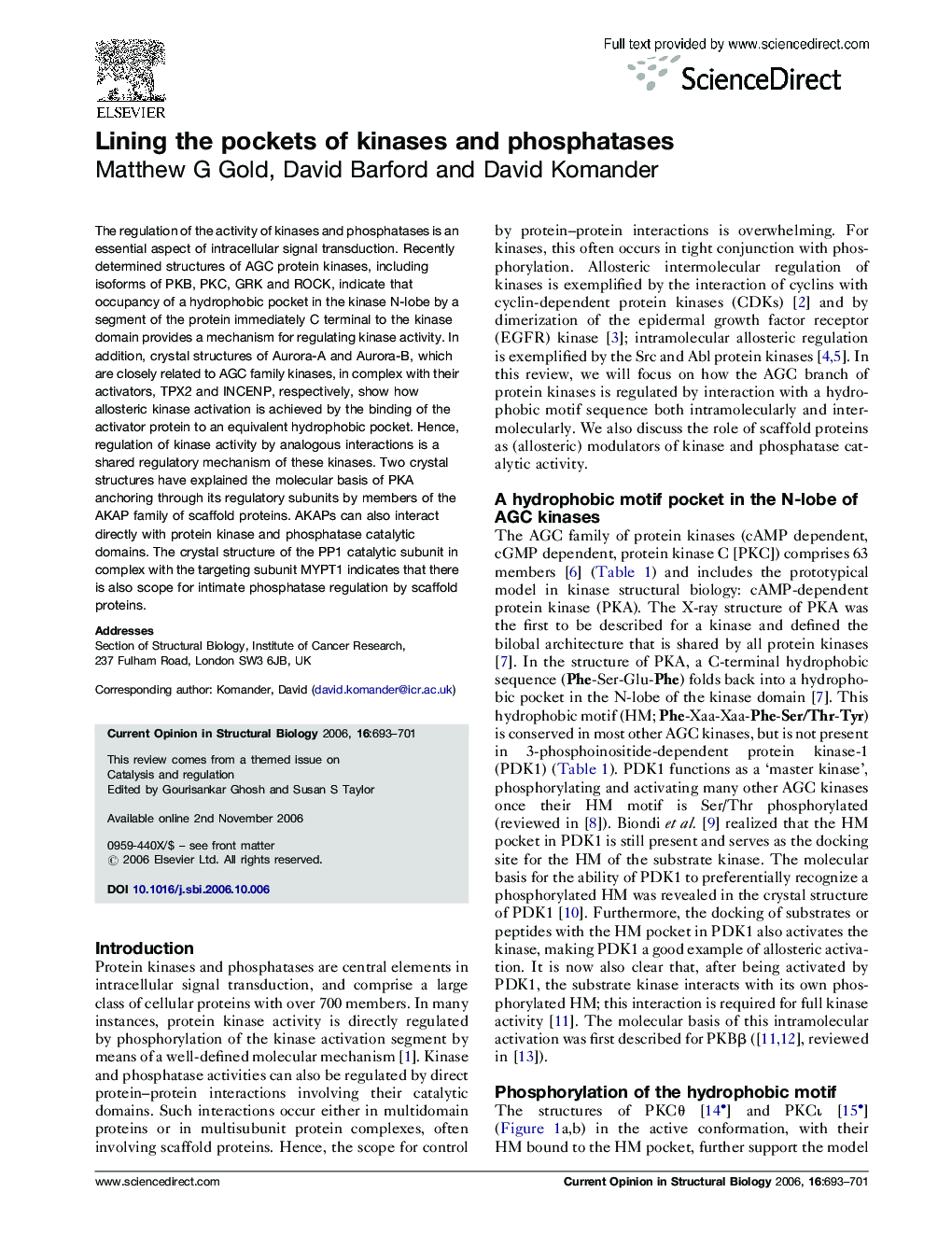| Article ID | Journal | Published Year | Pages | File Type |
|---|---|---|---|---|
| 1979733 | Current Opinion in Structural Biology | 2006 | 9 Pages |
The regulation of the activity of kinases and phosphatases is an essential aspect of intracellular signal transduction. Recently determined structures of AGC protein kinases, including isoforms of PKB, PKC, GRK and ROCK, indicate that occupancy of a hydrophobic pocket in the kinase N-lobe by a segment of the protein immediately C terminal to the kinase domain provides a mechanism for regulating kinase activity. In addition, crystal structures of Aurora-A and Aurora-B, which are closely related to AGC family kinases, in complex with their activators, TPX2 and INCENP, respectively, show how allosteric kinase activation is achieved by the binding of the activator protein to an equivalent hydrophobic pocket. Hence, regulation of kinase activity by analogous interactions is a shared regulatory mechanism of these kinases. Two crystal structures have explained the molecular basis of PKA anchoring through its regulatory subunits by members of the AKAP family of scaffold proteins. AKAPs can also interact directly with protein kinase and phosphatase catalytic domains. The crystal structure of the PP1 catalytic subunit in complex with the targeting subunit MYPT1 indicates that there is also scope for intimate phosphatase regulation by scaffold proteins.
